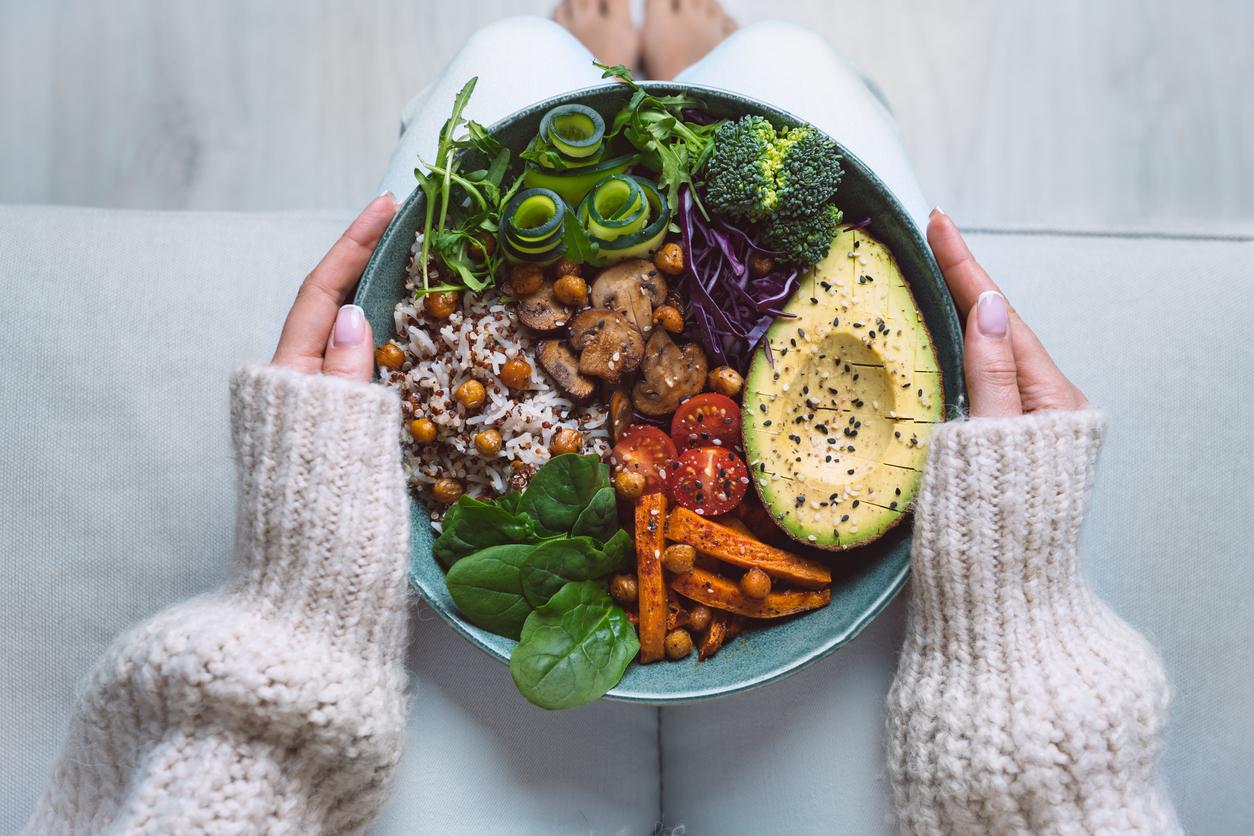
Choose your dairy products wisely
What can food do in case of illness? There is a whole range of conditions where diet can make all the difference. This episode is about lactose intolerance. We spoke to dietician and experience expert Christel Vondermans.
If you lactose intolerance If you eat or drink something with (large amounts of) milk sugar, complaints arise. Vondermans: ‘Adjustments to your diet can make complaints disappear. But you do have to make sure you get the nutrients you need.’
Cause: you lack lactase
Bloating, flatulence, intestinal cramps, nausea and diarrhoea. If you recognize one or more complaints from this list in yourself, you may have lactose intolerance. Vondermans explains: ‘Your body digests lactose, also known as milk sugar, less well. Normally, digestion proceeds like this: lactose, for example from a glass of milk, goes through your esophagus and stomach to your intestine. Once there, the enzyme lactose takes care of the digestion of lactose. The enzyme cuts lactose in half and these smaller particles are absorbed into your blood. They provide your body with energy. The enzyme lactase is normally produced in the lining of your small intestine. If this process doesn’t go well for you and you don’t make enough lactase, lactose goes undigested to your large intestine. There live intestinal bacteria that break down the lactose. This creates gases. And those gases cause complaints. One of the solutions: ensuring less lactose in your diet. Then less lactose arrives at your intestinal bacteria.’
Less lactose, well distributed throughout the day
A 200 ml cup of milk contains about 9 grams of lactose. In general, people with a lactose intolerance develop complaints from an amount of 12-15 grams of lactose per day. Most can digest that one cup of milk, or a bowl of custard or yogurt, without getting any complaints. Vondermans: ‘It is therefore usually not necessary to eat completely lactose-free if you have lactose intolerance. For example, many people tolerate 1 to 2 cups of milk a day just fine; especially if that milk is drunk with meals, evenly distributed throughout the day. By using the milk together with solid food, the milk does not go through to the intestines very quickly and stays in the stomach for a little longer. As a result, lactose gradually enters the small intestine and is more easily tolerated.’
She continues: ‘Sour products such as yogurt, cottage cheese and buttermilk are also usually well tolerated. These products contain lactic acid bacteria, which already partially break down lactose. By the time you buy and eat those acidic products, there is relatively little lactose in them. As a result, most people with lactose intolerance do not get complaints so easily from a bowl of yogurt.’
Dairy substitutes
But that doesn’t apply to everyone. A glass of buttermilk already gives Vondermans complaints. She therefore does not use regular milk, yogurt and buttermilk. Vondermans: ‘When I just discovered that I had lactose intolerance, I switched to soy products. And rice, oat and almond milks are also plant-based alternatives to milk. Check the packaging to see if extra calcium and vitamin B2 has been added. Ordinary dairy products make a major contribution to what we get in terms of calcium, vitamin B2 and vitamin B12. So much so that it is quite difficult to meet the recommendations for calcium and B2 without dairy.’ There are now also more and more manufacturers that make lactose-free dairy products from cow’s milk. Vondermans: ‘Since those products are readily available, I have switched. These lactose-free products taste the same as their lactose-containing family. So I start my day again with a bowl of cottage cheese with fresh fruit and some nuts. Lactose-free cottage cheese in my case.’
Lactase via a pill or capsule
At home it is fairly easy for Vondermans to take her intolerance into account. ‘I have the dairy products I use in the fridge, so I don’t really have to think about it. It’s different when I eat at someone’s house or go to a restaurant. Sometimes I manage to choose lactose-free, but sometimes I don’t have a choice or I prefer that tasty lunch salad with soft goat cheese (see box for products with lactose, ed.). For those situations I always have a box of lactase capsules or tablets in my jacket pocket and bag. I take such a capsule or tablet with lactase just before I start a meal with lactose. The lactase in such a capsule or tablet then ensures the breakdown of lactose that is in my food, before it can reach my large intestine. The capsules I have last about half an hour. If I sit at the table a little longer and have already had a capsule with a starter, I need another capsule for dessert. That is, if the dessert contains lactose.’ Vondermans admits that this is undoubtedly easier for her to estimate than for anyone else; as a dietitian she has a lot of nutritional knowledge. ‘I can usually estimate what lactose is in it and whether it will be too much for me. But sometimes I’m also wrong and a few hours later I have hellish abdominal pain and loose stools. This makes me realize all the more how nice it is if you can prevent those complaints. I therefore advise anyone with lactose intolerance to visit a dietician. Together you can try out how much lactose you still tolerate, how you can replace dairy products and whether your diet has any other deficiencies.’
Hard cheese is just fine
Those who use no or fewer dairy products may be getting too little calcium and vitamin B2. Vondermans therefore replaces her regular quark with a lactose-free variant and she also eats cheese every day. ‘I love cheese, so I’m glad that hard cheese, such as Gouda cheese, hardly contains any lactose. This is because lactose is broken down by lactic acid bacteria during ripening.’ Other hard cheeses such as farmer’s cheese, Frisian Nagelkaas, Edam cheese, goat cheese, sheep cheese, Parmesan cheese, Emmenthaler, Pecorino and Gruyère hardly contain any lactose. Vondermans benefits from this: ‘A sandwich with Gouda cheese or hard goat’s cheese at lunch, grated Parmesan over the pasta, aged cheese on a serving board, a cheese sauce over the cauliflower and cubes of cheese over the leek stew. I may not tolerate lactose well, but cutting out all dairy is certainly not necessary if you choose wisely.’
Lactose is in the following milk products:
- milk and buttermilk
- chocolate milk, yogurt drink
- fruit dairy drinks, such as Rivella and Taksi
- goat’s milk, sheep’s milk, horse’s milk and donkey’s milk
- soft goat and sheep cheese
- processed cheese, cheese spread, soft foreign cheese, fresh cheese and Hüttenkäse
- yogurt, cottage cheese and kefir
- custard, porridge, pudding and mousse
- whipped cream, sour cream and crème frache
Lactose also occurs in products in which milk, milk powder and certain components from milk have been processed. This is stated in the ingredients list on the packaging.

















